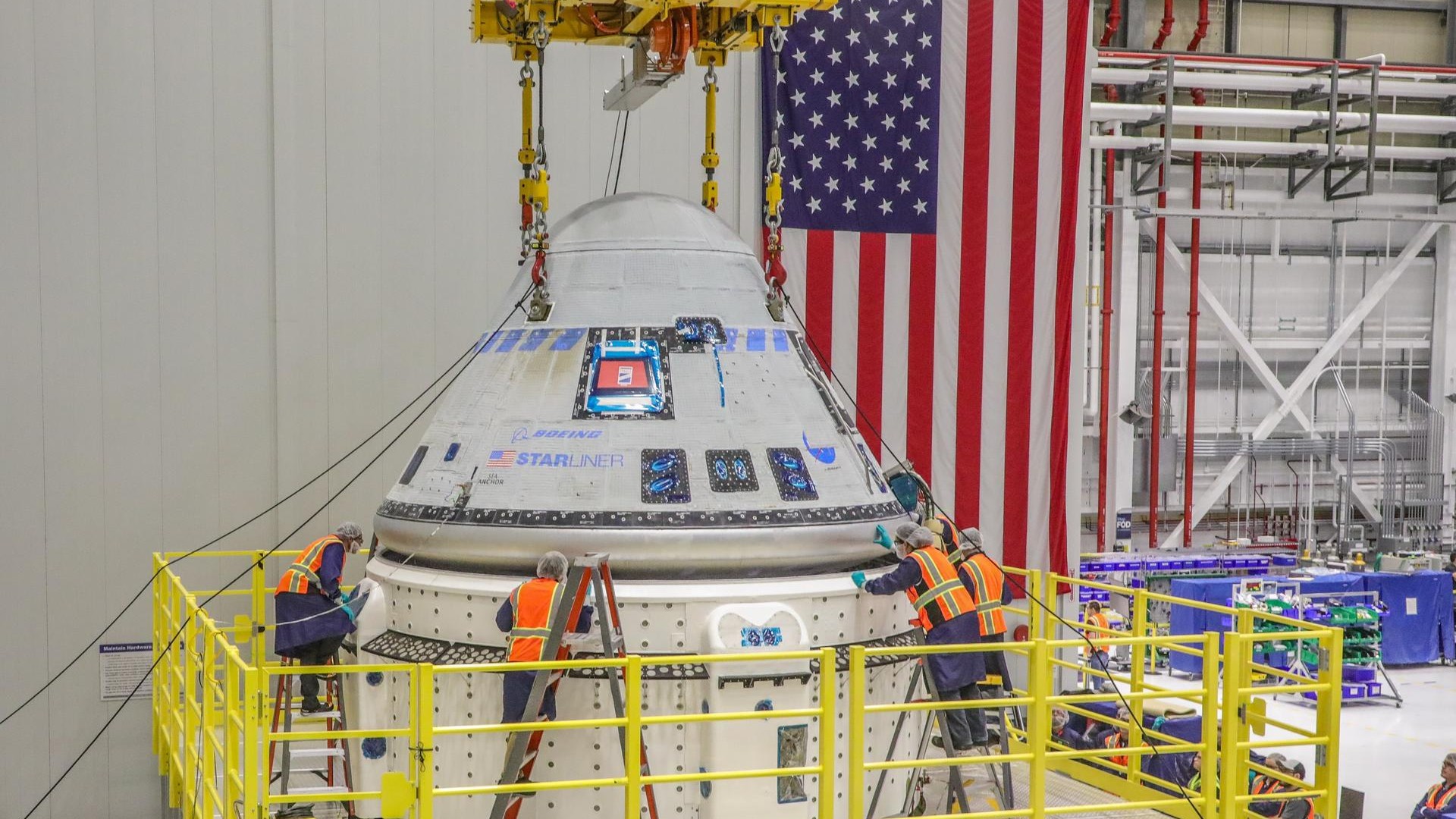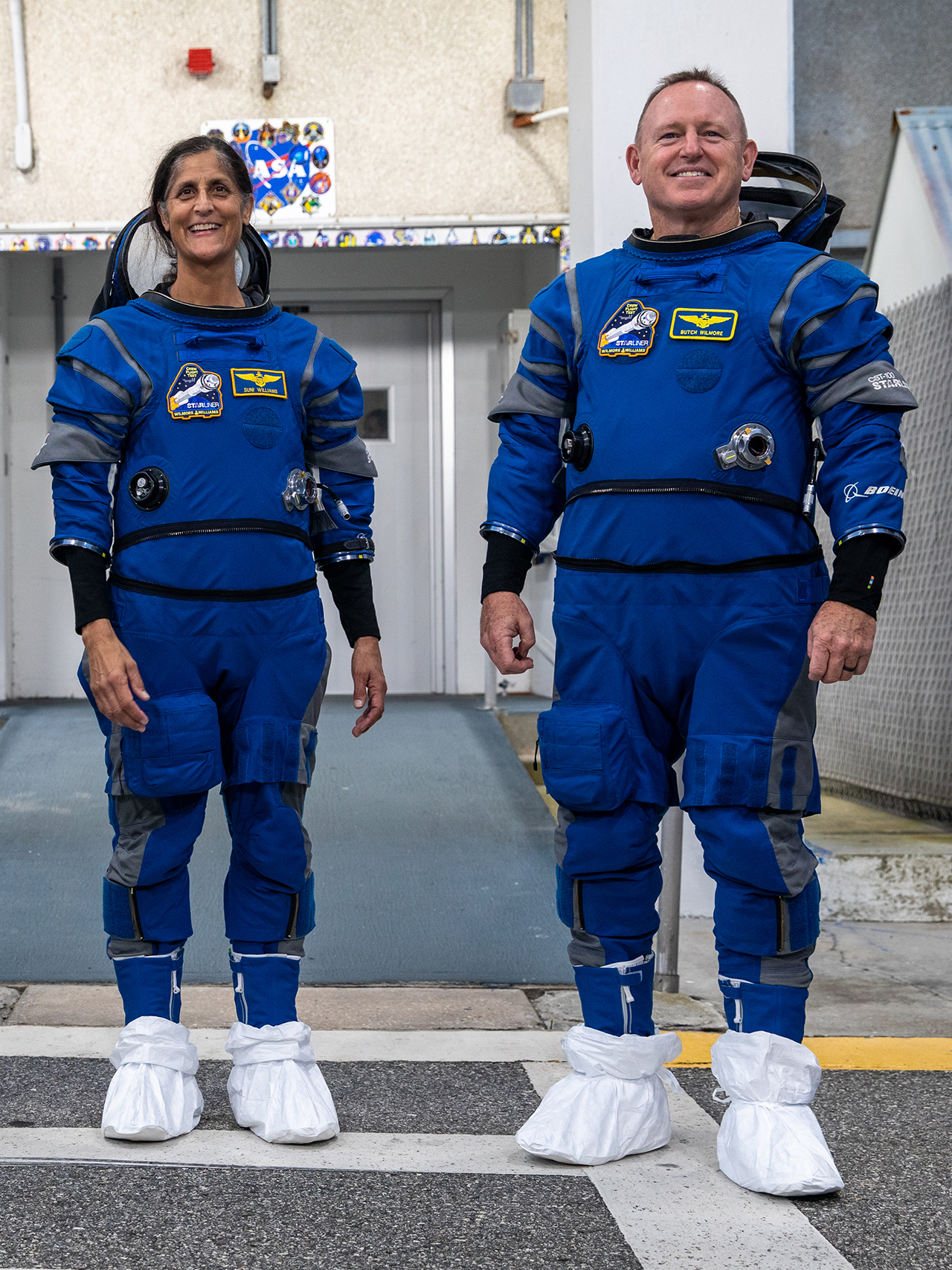
Boeing's new astronaut taxi won't launch on its first crewed mission next month after all.
Boeing and NASA had been targeting the second half of April for Crew Flight Test (CFT), which will carry two astronauts to and from the International Space Station (ISS) aboard the private Starliner capsule. But that plan has now changed.
"We're adjusting the @Space_Station schedule including the launch date for our Boeing Crew Flight Test as teams assess readiness and complete verification work. CFT now will launch following Axiom Mission 2 for optimized station operations," NASA human spaceflight chief Kathy Lueders said via Twitter on Thursday (March 23).
Axiom Mission 2, or Ax-2 for short, will be the second crewed mission to the ISS operated by Houston-based company Axiom Space. It will employ a SpaceX Falcon 9 rocket and Dragon capsule, as Ax-1 did in April 2022, and is tentatively scheduled to launch in early May.
NASA will share target launch dates for both Ax-2 and CFT soon, Lueders said in another Thursday tweet. "As always, we will fly when we are ready," she added.
Related: Starliner: Boeing's next-generation spaceship for astronauts
Like SpaceX, Boeing holds a multibillion-dollar contract with NASA's Commercial Crew Program to provide taxi services to and from the ISS. SpaceX recently launched the sixth operational astronaut flight under its contract, but Boeing is still getting Starliner up to speed.
Get the Space.com Newsletter
Breaking space news, the latest updates on rocket launches, skywatching events and more!
Starliner does have one successful spaceflight under its belt — an uncrewed jaunt called Orbital Flight Test 2, which spent about a week docked to the ISS in May 2022.
CFT is an even bigger test for Starliner. The mission will lift off atop a United Launch Alliance Atlas V rocket from Florida's Cape Canaveral Space Force Station, sending NASA astronauts Suni Williams and Butch Wilmore to the ISS for a roughly two-week stay.
If Starliner succeeds on CFT, NASA will likely certify it for regular astronaut missions, officially welcoming another private crewed spacecraft into the American fleet.

Ax-2, by the way, will send four people to the ISS — former NASA astronaut Peggy Whitson; investor John Shoffner; and Rayyanah Barnawi and Ali AlQarni, both members of Saudi Arabia's inaugural astronaut class. The latter duo will become the first Saudis to travel to the ISS.
Whitson, who's now a consultant for Axiom Space, will command the Ax-2 mission. She has spent more time in space (665 days) than any other American.
Mike Wall is the author of "Out There" (Grand Central Publishing, 2018; illustrated by Karl Tate), a book about the search for alien life. Follow him on Twitter @michaeldwall. Follow us @Spacedotcom, or on Facebook and Instagram.
Join our Space Forums to keep talking space on the latest missions, night sky and more! And if you have a news tip, correction or comment, let us know at: community@space.com.

Michael Wall is a Senior Space Writer with Space.com and joined the team in 2010. He primarily covers exoplanets, spaceflight and military space, but has been known to dabble in the space art beat. His book about the search for alien life, "Out There," was published on Nov. 13, 2018. Before becoming a science writer, Michael worked as a herpetologist and wildlife biologist. He has a Ph.D. in evolutionary biology from the University of Sydney, Australia, a bachelor's degree from the University of Arizona, and a graduate certificate in science writing from the University of California, Santa Cruz. To find out what his latest project is, you can follow Michael on Twitter.
-
Unclear Engineer Boeing's "Starliner" is apparently becoming a "Sideliner" as it continues to have problems, while SpaceX delivers "Dragon" missions on schedule.Reply
From elsewhere on the Internet:
". . . fueling of the spacecraft, which officials said they wanted to do within 60 days of the scheduled launch to mitigate any leaks that could corrode valves, a problem that delayed the vehicle’s second uncrewed test flight by more than 10 months. That fueling was scheduled to take place in early March."
So, if fuel sitting in the Starliner has leakage issues, and leakage issues create valve corrosion issues, what is that saying about the reusability of the Boeing product? I think, but am not sure, that these leaks are in the service module, which is not resused. But, is the potential damage limited to the expendable part of the package?









